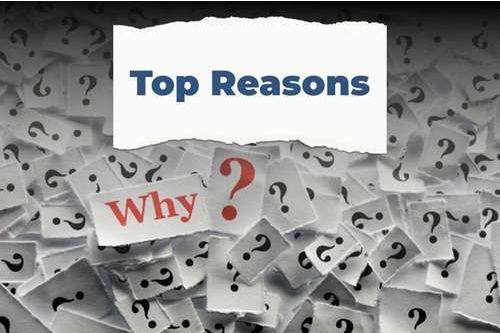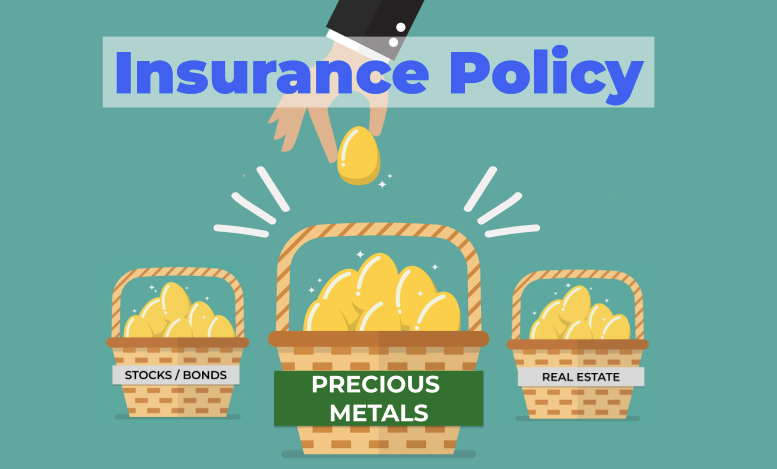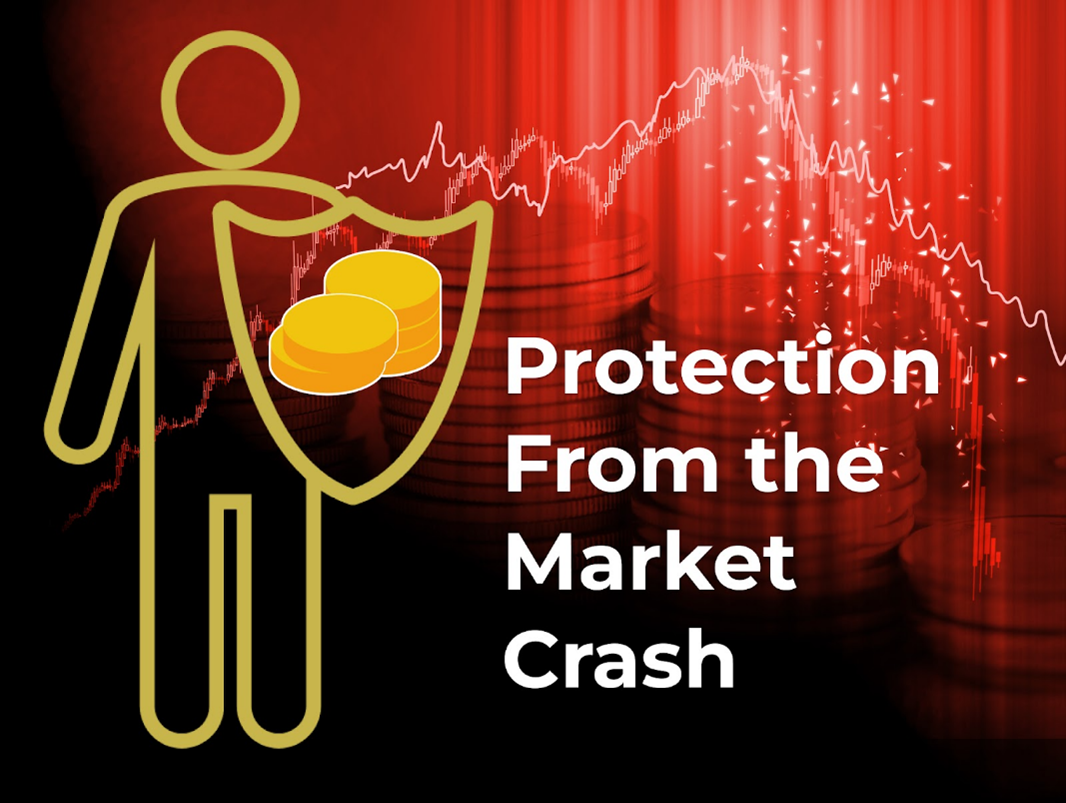

Top Reasons Why Most People Purchase Gold and Precious Metals
The economic challenges of the last few years have people searching the internet in record numbers for ways to protect their portfolios. The demand for precious metals has climbed to new record levels and is rapidly accelerating. Maybe you heard something on the news about the recent bank failures, inflation, government debt, supply chain challenges, rising interest rates, global de-dollarization, geo-political problems, and other unsettling economic and political trends. That search brought you to this article.
Whatever has had you searching on the internet for precious metals, your thoughts and concerns are more common than you may realize. After hundreds of thousands of transactions, we have recognized some patterns about why people want precious metals.
The data shows that most people wish to have precious metals in their portfolios but need to know how to start. They search the internet to determine how and why to invest in gold, silver, and other precious metals.
1) Protection Against the Dollar Devaluation
One of the greatest threats to every portfolio is an invisible thief. It goes by many names, but most people call it inflation. Some people say the Dollar is being devalued or depreciating. No matter what words people use, they try to describe the reality of losing purchasing power over time.
The media uses several different terms to describe different types of inflation. What’s the difference between core inflation and headline inflation? Is there a difference between deflation and disinflation? What is built-in inflation? Click here to learn more about the different terms surrounding inflation.
The Federal Reserve was created in 1913. Since then, the Dollar has lost almost 100% of its buying power. A good costing $1 in 1913 would cost $30.49 in 2023.


Precious metals are commodities that don’t change over time. An ounce of gold is the same today as it was 100 years ago, making it an excellent value store through the years. People like precious metals to hedge against inflation as a purchasing power safeguard.
The price of gold and other precious metals outpaced inflation by more than three times the loss of purchasing power over time. The accumulative inflation since 1913 is 2,948.9%. Let's compare that to an ounce of gold. In 1913, gold was fixed at $20.14 per Troy ounce. At the time of writing, the price of gold is slightly above $2,000, an increase of 9,930.5%.
Learn more about gold compared to inflation here.
2) Investment
Most people like the protection of precious metals but still want to make a few dollars along the way as well. Investments are designed to increase purchasing power over time. As we learned, gold has been a consistently profitable and low-risk investment that protects and increases purchasing power.
Most people don't know there are different precious metal asset classes for investment. When we say other asset classes, we are not talking about different types of metals like gold, silver, platinum, and palladium. Instead, it is the process of manufacturing that differentiates between the asset classes. Some precious metals are valued by weight, and others by their rarity.
Certain precious metals provide long-term growth, and some provide short-term liquidity. Learn more about the precious metal asset classes here or call (800) 694-3518 to speak to a precious metals expert.
3) Insurance Policy
People have insurance for almost every area of their lives. People have car, home, medical, pet, supplemental, employment, and even life insurance to protect themselves from financial disaster. Isn't it strange that insurance companies don't offer money or economy insurance? It's like they think there is too much risk to cover.
The traditional way investors “insure” their assets is through diversification. Diversification is the “Don’t put all your eggs in one basket" strategy. Diversification means that the different assets in a portfolio don't behave the same way. One event can wipe out the entire portfolio if all assets move together. Imagine your financial advisor told you to put 100% of your money into the newest technology company. The stock may do great for a while. However, the stock could go to zero if the company is mismanaged or involved in a scandal. Having some exposure to the stock would be good, but putting all your money there is a bad idea.
Precious metals are considered "uncorrelated" to other assets like stocks, bonds, cryptocurrencies, and real estate. Uncorrelated means that it doesn't behave the same as the other asset. Another way to think about it is by saying uncorrelated assets create protection or "insurance" from market events. Precious metals should be a part of an age-appropriate, balanced portfolio. Most investors put 5-20% of their portfolio into precious metals.


4) Inheritance
You won’t be able to take it with you. Have you ever seen a U-Haul behind a hearse? We haven’t, either. Instead, we see countless people using precious metals to pass down wealth to the next generation for financial and nostalgic purposes.
There are intelligent and strategic reasons that precious metals are excellent for inheritance. When you buy physical precious metals, they become your property. Whatever you do with them is entirely your business. If you want to give them to your heirs as a gift or inheritance, that is a very private matter. The only people that will know are the people you tell. However, if you want to leave them your bank account, that is a very public matter. There will be several outreached hands wanting a share.
Precious metals transmit more than just a financial inheritance. They can convey a generational legacy that has special meaning. Various precious metal assets have beautiful designs that can become memorabilia between you and your loved one. From Star Wars, Comic book figures, animal designs, and football shapes to historical coins, you can pass on specific coins that hold a certain story and meaning. Imagine how special handing down a coin to a grandchild could be when they hand it to their grandchildren. For many people, it's more than wealth. It's the story (but the wealth is excellent too).
5) Protection for the Retirement Funds
People spend their youthful years building a nest egg to enjoy their wiser years. People with more time until retirement can afford more risk in their portfolios. If the worst were to happen, they would have time to recover. However, as they age, most people desire more financial stability, which means moving toward investments with less risk. If people don’t move toward less risky assets, they could experience what most investors felt in 2022 or 2008.
In 2022, market conditions led to vast losses. The average retirement account loss was -22.9%, devastating countless people's retirement plans. Think about it this way. Suppose one planned for a 25-year retirement and would spend every penny. They could spend about 4% of their savings every year. If they wanted to leave an inheritance, the amount they could spend would be less. The loss is more than a scary number on paper. It represents years of savings. A -22.9% loss would equate to about 5.7 years of protection.
People who moved their retirement into precious metals before the market turmoil of 2022 may not have seen tremendous gains, but they didn't lose five years of savings.
For comparison, gold outperformed stocks, bonds, and cryptocurrencies in 2022, which all saw double-digit losses. Despite all the economic challenges, gold grew 0.4% in 2022.
There is an industry "secret" that most financial advisors don't want people to know. Your retirement doesn't have to be in paper assets like stocks and bonds. The government allows retirement accounts to be rolled over into precious metal IRAs, usually without taxes or penalties for most people of retirement age.
6) Fear of Economic Collapse (For Barter/ Trade)
In 1971, President Richard Nixon removed the U.S. Dollar from the gold standard and made the Dollar a fiat currency. "Fiat" is a Latin term meaning "by decree." In other words, eliminating the gold backing meant the Dollar was only valuable because of a decree by the government. The Dollar is a trust agreement between the U.S. government and the Dollar's users. What would happen if that trust were broken?
When currencies are transitioning, there can be social upheaval and economic chaos. Like every fiat currency in history, the Dollar would become worthless and replaced by another currency when people lose trust. For example, Germany had six currencies in the 20th century: the Goldmark, Papiermark, Reichsmark, Austrian Shilling, Deutsche Mark, and the Euro.
Precious metals have been money for thousands of years. During economic chaos, many communities often return to gold and silver for transactions. Silver was used for daily purchases like groceries, tools, and clothes during these times. In contrast, gold was used for larger purchases like houses, cars, and businesses. Silver is like a "checking account," and gold is a "savings account." Click here for silver and here for gold.
7) Protection from the stock market crash
As you can see by now, precious metals are trusted for protection. People use precious metals to preserve wealth no matter what happens.
The stock market works in cycles and has a significant correction about every 7-12 years. Consider the years between the last handful of market crashes. In 2020, the market lost 30% at the onset of Covid-19. 2008, the market collapsed due to a real estate bubble. 2000, the "dot com" bubble burst. 1987 will live in many people's minds as "Black Monday," when the market lost 22% in a single day. The list continues throughout U.S. history back to its founding. Past performance does not predict future results, but ignoring such a consistent pattern is a bad idea.


Savvy investors position their portfolios to weather any storm. History teaches that a storm will come eventually, so it makes sense to be ready. As discussed in the insurance section, owning precious metals protects your portfolio through diversification. Also, precious metals tend to perform well when paper assets crumble. Between 2008-2011, gold prices more than doubled as stocks fell.
Every situation is unique, and there isn't a "one-size-fits-all" approach to precious metal investing. Our highly trained experts will help you learn and create the most appropriate plan to reach your goals.
We are curious. What is your top reason for investing in precious metals? Was it on the list, or is it something else?
Call us at (800) 694-3518 and let us know your best reason to invest in precious metals and how we can help.
1-800-694-3518





